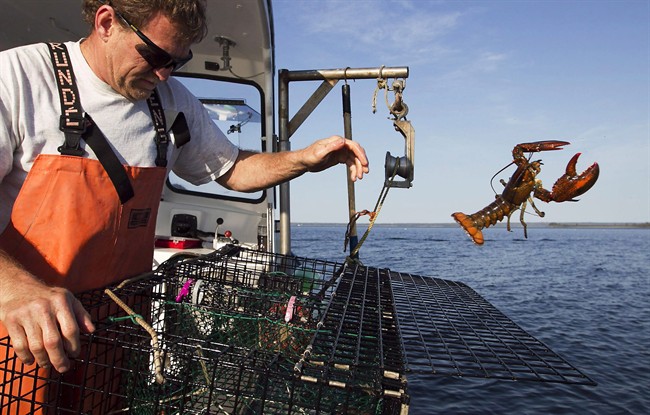For the men and women working in Canada’s commercial fishing industry, every day on the open ocean brings with it life-threatening risks.

The nature of the job — long hours in wet, freezing cold temperatures — and the risks posed by going overboard when workers don’t wear safety gear have made it one of the deadliest industries in the country.
Last year was one of the worst on record, with the Transportation and Safety Board (TSB) saying that during the first 10 months of 2018, 17 people died — an all-time high in the industry.
But a push to make commercial fishing safer continues.
Leonard LeBlanc, chair of the Fisheries Safety Association of Nova Scotia, is leading the charge.
“I think safety has to be paramount on any fishing vessel enterprise,” LeBlanc said in an interview at the association’s offices in Dartmouth, N.S.
“Family is important. It’s all about coming home safely.”
READ MORE: Record number of fishing industry deaths, employee fatigue highlight 2018 TSB safety watchlist
Undergoing a cultural shift
LeBlanc, who was a fisherman for three decades, says that despite the record number of deaths last year, deaths in the industry had actually been trending down.
LeBlanc attributes the trend to a cultural shift in the industry towards accepting safety measures.
“People thought they were cowboys on the water, and that nothing could hurt them,” LeBlanc said of the previous mindset.
He explained that people would refuse to wear personal floatation devices (PFD) when out on the water and that safety was rarely discussed.

Now, LeBlanc says safety is always on the agenda at any meeting of fishing groups and that PFD use is strictly enforced on most boats.
He used an example of a friend who went overboard while wearing the PFD that the Fisheries Association had provided him.

Get weekly health news
“They watched him go down — he went down about a metre, and then the PFD came on, pulled his head out of the water and saved his life,” said LeBlanc.
“To me, that’s a win. That’s a win for all the work I’ve done, just for that one.”
WATCH: National Day of Mourning ceremony in Halifax

He says they’ve been assisted by a number of federal agencies — such as the TSB and the Workers’ Compensation Board — who’ve taken action to encourage, monitor, regulate and enforce safety regulations.
“We have all the partners that we need to create change,” said LeBlanc. “Even the safety equipment people are building equipment that are for the fishing industry. So it’s a major shift that we’ve accomplished.”
WATCH: Lifejackets vs. PFDs — What’s the difference?

One of those groups is a quartet of engineering students at the University of New Brunswick who are in the process of designing a fishermen-friendly smart life jacket that they believe will save lives.
“We have grown up in these coastal communities hearing about tragedies happening in the marine industries,” Bridget McCloskey told Global News last month.
The group even consulted with LeBlanc and the Fisheries Safety Association of Nova Scotia to find out what was needed to help save lives.
The LifeTrack Outlast lifejacket is meant to fit more tightly than existing PFDs or life jackets. The hope is that fisherman won’t get bogged down wearing the life jacket when hauling in their catches.
The jacket will inflate upon impact, triggering an embedded GPS tracking device that will help search and rescue teams.
Statistics from the TSB show that in almost half of Canadian fishing fatalities, no distress signal was ever sent.
McCloskey said there were other tracking devices on the market but their research shows that fishermen tend not to wear them as the devices have to be pinned on and a button needs to be pressed to activate the emergency signal.
“Which obviously would be hard if you are unconscious. So our life jacket has it built in so that as soon as you hit the water you can send it out,” she said.
READ MORE: UNB engineering students hope new lifejacket design will save lives
For LeBlanc, the fight to make the industry safer is a personal one.
In 1989, he lost his five-year-old son to a boating incident — an event that left him and his family grieving.
But that tragedy also gave LeBlanc purpose, pushing him towards becoming a safety advocate.
“So my goal is to make sure that nobody goes through what I went through, and what my wife and my daughter went through,” he said.
“Losing a family member is bad, and I know how bad it is.”
LeBlanc says there will always be accidents — they’re unavoidable in the fishing industry — but says he has a specific goal in mind.
“To me, the future, hopefully we will reach our goal, which is zero deaths in this fishery. “









Comments